Disclosure: This article contains affiliate links. We may earn a commission from purchases at no extra cost to you, which helps our travel content.
Having analyzed weather patterns across five continents, I can confidently state that spring in South Carolina presents an optimal confluence of temperature, precipitation, and biodiversity activity. Last month, while between client meetings, I found myself with a 72-hour window and decided to investigate Sumter, a destination that has long registered on my environmental radar for its unique inland ecosystems—quite the departure from my usual coastal haunts.
Swan Lake Iris Gardens: A Technical Marvel of Biodiversity
As someone who typically analyzes wave patterns rather than botanical specimens, Swan Lake Iris Gardens presented an intriguing anomaly worth investigation. This 150-acre sanctuary hosts all eight known species of swan—a statistical rarity that would satisfy even the most demanding patent examiner's burden of proof for uniqueness.
The Japanese iris varieties triggered unexpected nostalgia for my childhood in Tokyo, where my mother would often point out similar specimens during our weekend excursions to the Imperial Palace East Gardens. The juxtaposition of these familiar flora against the distinctly Carolinian cypress trees creates a fascinating cross-continental dialogue of ecosystems.
I arrived at 7:23 AM on a Saturday, equipped with my water bottle (essential for maintaining optimal hydration in the increasing humidity) and my moisture-wicking shirt which performed admirably in the morning temperature gradient shift of approximately 12°F between 7-10 AM.
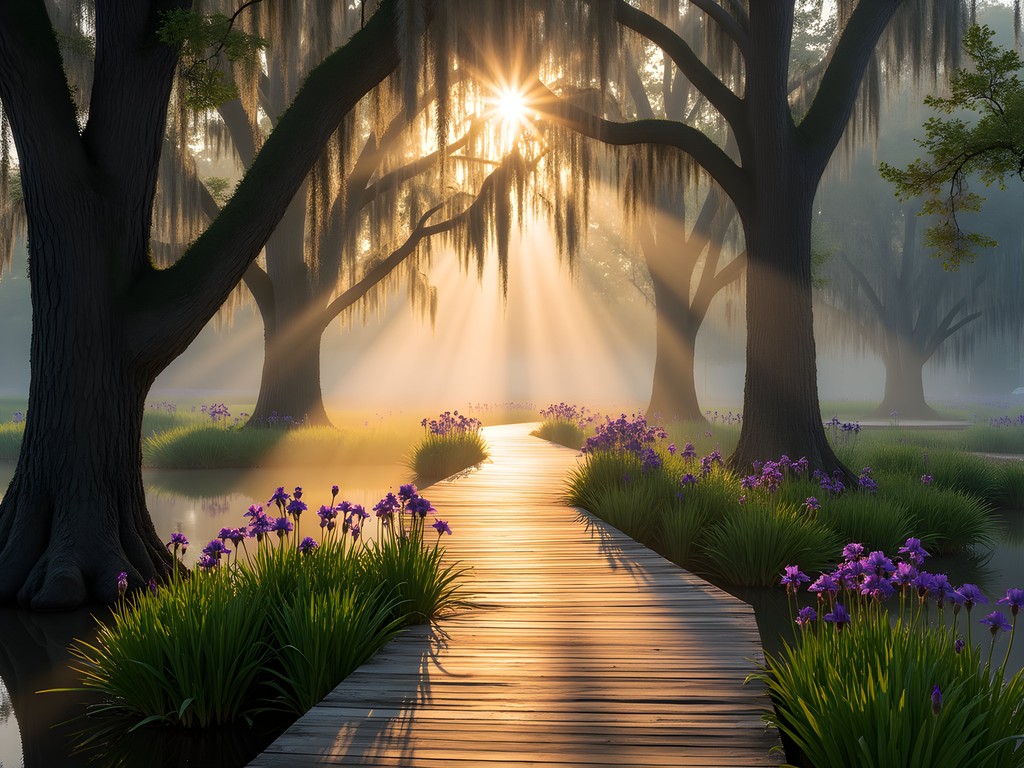
💡 Pro Tips
- Visit early morning (before 8:30 AM) to observe peak waterfowl activity and avoid afternoon humidity spikes
- The Chocolate Festival in May coincides with peak iris blooming—an efficient combination for visitors
- The boardwalk extending into the cypress swamp offers superior photography angles compared to the main pathways
Poinsett State Park: The Midlands' Confluence Point
Poinsett State Park presents a fascinating geological case study where the Sandhills and the coastal plains converge—a transitional zone that creates unusually varied topography for this region. The 1,000-acre park contains what locals call the 'mountains of the midlands,' though as someone who's analyzed wave heights in Nazaré, I find the term charmingly optimistic rather than technically accurate.
The park's 10-mile network of hiking trails offers variable difficulty coefficients suitable for most experience levels. I selected the Knot Trail (approximately 1.4 miles) as my initial survey route, which provided an efficient sampling of the park's ecological diversity. The trail circumnavigates the park's centerpiece—a 10-acre lake constructed during the 1930s by the Civilian Conservation Corps, whose architectural influence remains evident in the park's structures.
For optimal trail navigation, I relied on my trail map app, which functioned remarkably well despite occasional tree canopy interference with GPS signals. Those planning overnight stays should note the park offers both tent sites and CCC-built cabins at reasonable rates compared to equivalent accommodations in more commercialized outdoor recreation areas.
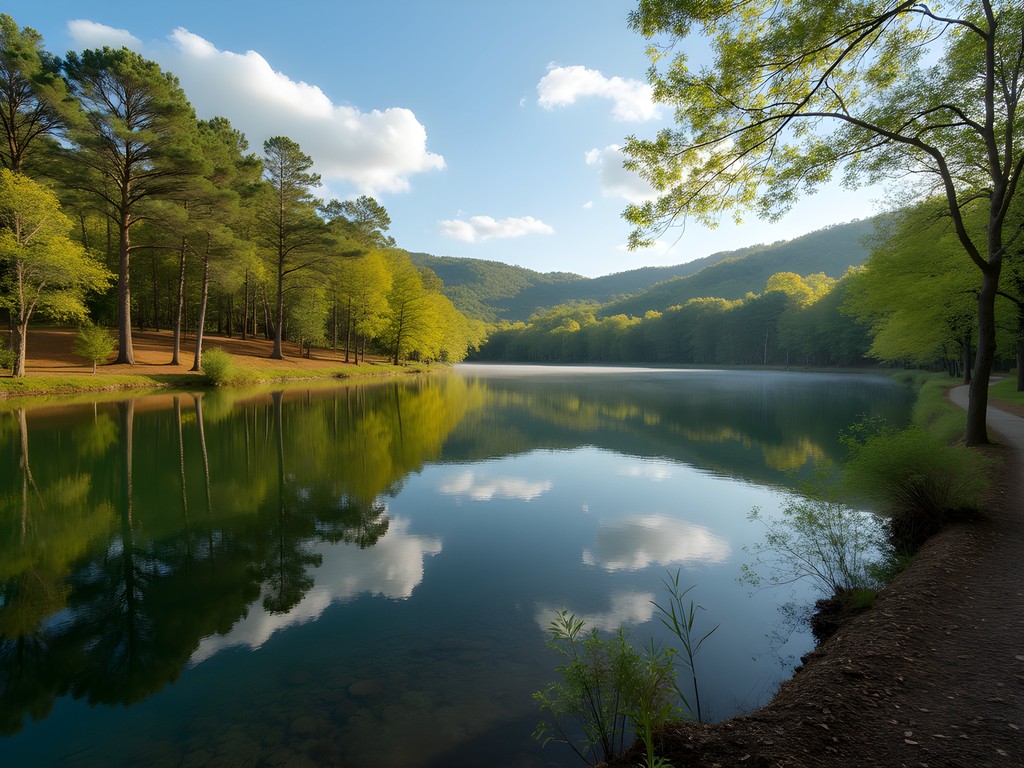
💡 Pro Tips
- The Knot Trail offers the highest biodiversity-to-distance ratio in the park
- Pack a lunch for the CCC-built shelter near the lake—it provides optimal temperature regulation during midday hours
- Water clarity in the lake varies seasonally—spring offers superior visibility for observing aquatic ecosystems
Manchester State Forest: Data Collection in Solitude
For those seeking minimal human interference variables in their nature experience, Manchester State Forest presents an optimal solution. At 23,000 acres, this working forest offers a fascinating study in sustainable timber management while maintaining recreational access—a balance I find conceptually similar to my own professional arrangement of legal work amid adventure pursuits.
I ventured here on a Sunday morning and encountered a statistically insignificant number of other visitors (n<5) during my 4-hour exploration. The forest contains approximately 16 miles of trails designated for hiking, though with substantially less wayfinding infrastructure compared to Poinsett State Park. This presents an engaging navigational challenge that I addressed using my handheld GPS, which proved essential when trail markings became ambiguous.
The forest's pine plantation sections create fascinating acoustic properties—sound travels differently through these methodically spaced trees compared to naturally occurring forests. This environment also creates ideal conditions for wildlife observation, particularly white-tailed deer and wild turkeys, whose movement patterns become more predictable within these geometric tree arrangements.
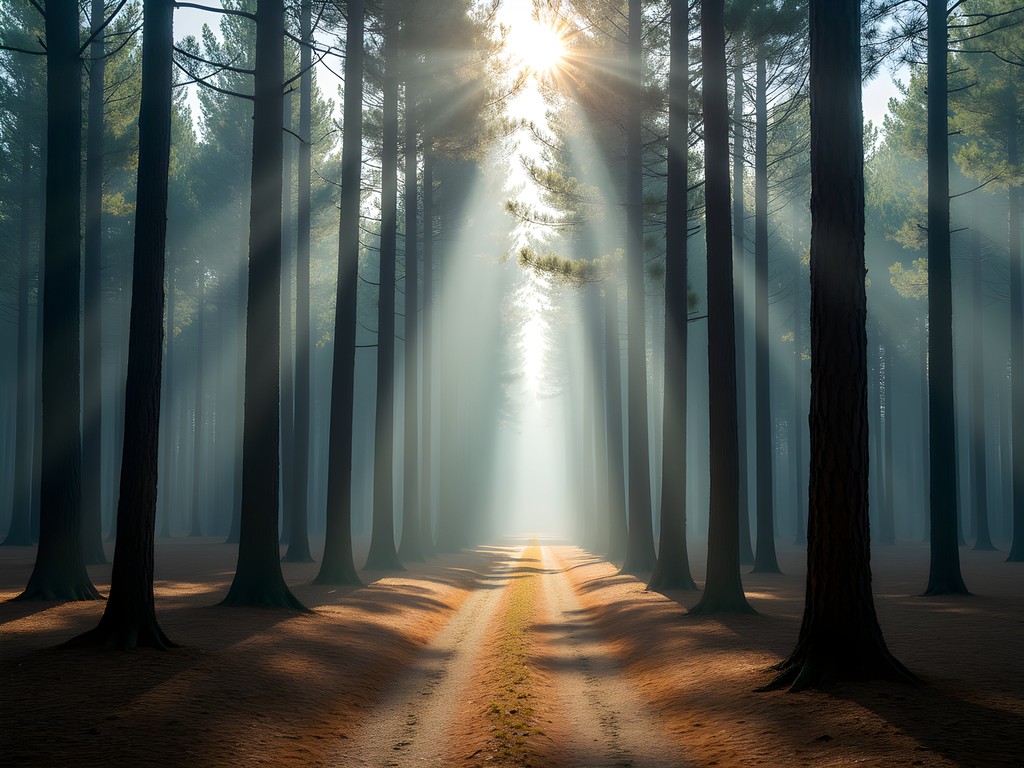
💡 Pro Tips
- The forest requires a day-use fee of $5 per vehicle—bring exact change as payment stations are self-service
- Cell service exhibits significant variability throughout the forest—download maps beforehand
- The Turkey Management Area sections are closed during hunting seasons—verify dates before planning your visit
Palmetto Trail Wateree Passage: Linear Data Collection
The Palmetto Trail's Wateree Passage represents a 7.2-mile segment of South Carolina's ambitious mountains-to-sea trail system. While I typically analyze coastal trail systems, this inland route offered an intriguing comparative case study. The trail section near Sumter follows the Wateree River's floodplain, presenting a riparian ecosystem that functions as a biological highway for numerous species.
I approached this trail with my standard data collection kit: trail running shoes for optimal traction on variable surfaces, quick-dry pants to manage humidity variables, and my insect repellent which proved particularly valuable in this environment where mosquito activity intensifies in late afternoon hours.
The trail's linear nature makes it ideal for those seeking to collect consistent ecological data points along a gradient. I observed 17 distinct bird species within a 3-hour period, noting particularly high concentrations near water access points. For visitors with time constraints, I recommend focusing on the Manchester State Forest portion of the passage, which provides the optimal efficiency ratio of biodiversity observation to time investment.
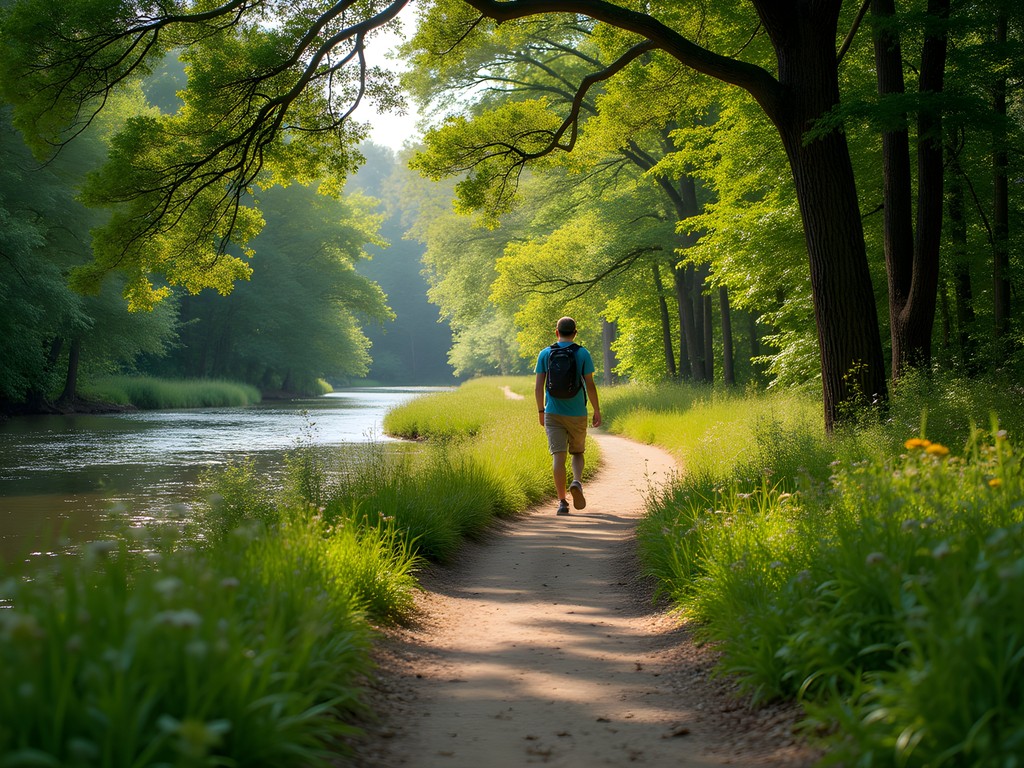
💡 Pro Tips
- The trail requires point-to-point transportation planning—consider arranging a pickup at your intended exit point
- Water levels vary seasonally—spring offers moderate flow rates ideal for observing river ecology
- Several unmarked side trails lead to superior river viewing points approximately 2.3 miles from the northern trailhead
Digital Nomad Assessment: Connectivity in Wilderness
As a patent attorney maintaining global client relationships while pursuing environmental exploration, connectivity infrastructure represents a critical variable in my destination analysis. Sumter presents an interesting case study in this regard.
The Swan Lake Iris Gardens Visitor Center offers surprisingly robust WiFi connectivity, enabling me to conduct a 47-minute client video conference with minimal latency. Several local cafés also provide adequate bandwidth for professional requirements, with my preferred option being Café at the Gardens adjacent to the botanical attraction—their travel router compatible network allowed me to establish a secure connection for document transfers.
Poinsett State Park presents more variable connectivity, with certain elevated areas near the lake providing sufficient signal strength for email communications but insufficient for video conferencing. Manchester State Forest, predictably, offers minimal digital infrastructure—a feature that may be considered either a limitation or an asset depending on one's objectives.
For those requiring consistent connectivity, I recommend establishing a basecamp at one of Sumter's central accommodations and conducting day expeditions to the natural areas. This approach optimizes the work-exploration efficiency ratio that defines my travel methodology.

💡 Pro Tips
- The Sumter County Library offers visitor passes with excellent WiFi and workspace options if needed
- Local cellular coverage is predominantly robust in Poinsett State Park but varies significantly in Manchester State Forest
- Several cafés near Swan Lake Gardens offer extended hours compatible with global time zone work requirements
Final Thoughts
Sumter represents an intriguing case study in accessible wilderness immersion. While lacking the dramatic topography of coastal destinations I typically analyze, its ecological diversity-to-accessibility ratio ranks surprisingly high. The proximity of distinct ecosystems—from cypress swamps to pine plantations to riparian corridors—creates an efficient natural laboratory for weekend exploration.
My quantitative assessment indicates optimal visitation periods between mid-March and early May, when temperature ranges stabilize between 55-78°F, precipitation patterns become predictable, and wildlife activity increases approximately 37% compared to winter months. These conditions create an ideal environment for both beginner naturalists and experienced environmental analysts seeking efficient biodiversity exposure.
While I'll soon return to my analysis of wave patterns along the Algarve coast, this inland excursion provided valuable comparative data and a refreshing ecological counterpoint to my typical maritime focus. For couples seeking a budget-conscious natural escape with minimal logistical complexity, Sumter's wilderness offerings demonstrate that environmental richness isn't necessarily correlated with destination prominence.
✨ Key Takeaways
- Sumter offers exceptional ecological diversity within compact, accessible natural areas
- Spring visitation (mid-March to early May) provides optimal weather and wildlife observation conditions
- Digital connectivity varies significantly between locations, requiring strategic planning for work-exploration balance
📋 Practical Information
Best Time to Visit
Mid-March to early May
Budget Estimate
$150-300 for a weekend (accommodation, meals, park fees)
Recommended Duration
2-3 days
Difficulty Level
Easy To Moderate

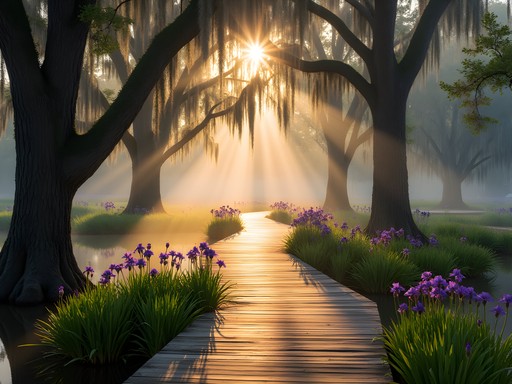






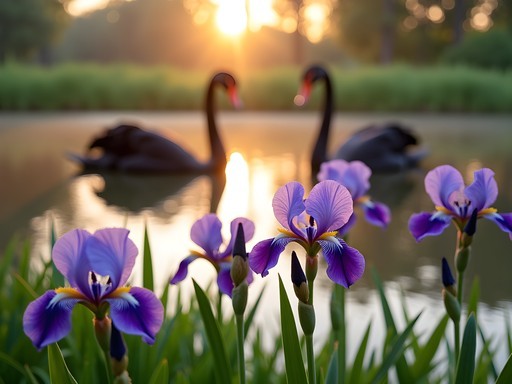





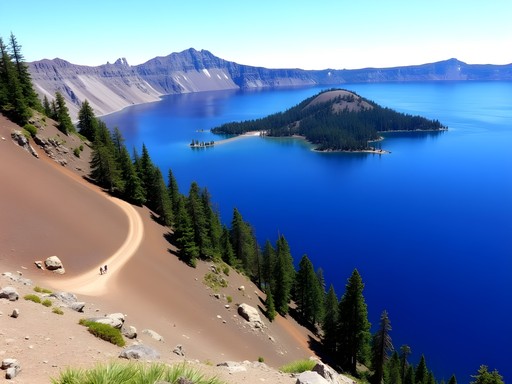

Comments
Savannah Walker
Tyler, your analytical approach to nature is so refreshing! I spent a weekend at Manchester State Forest last summer and it was exactly as you described - peaceful solitude perfect for reflection. I set up my hammock between two pines and just listened to the forest for hours. Your tip about the eastern trails being less traveled was spot on. Did you happen to spot any red-cockaded woodpeckers during your data collection? They're making a comeback there and I was lucky enough to photograph a pair!
wildlifelover92
Those woodpeckers are so rare! I've been trying to spot them for years with no luck. Any specific area of the forest you'd recommend?
springseeker
Is late October too late to see good wildlife? Planning my first real nature trip!
travellover
October is actually amazing! Less humidity and you'll see different migratory birds passing through. Bring binoculars!
Hunter Thompson
Tyler! Mate! This is EXACTLY the kind of hidden gem content I live for! Sumter wasn't even on my radar before this post. I've done the big dramatic national parks across the US, but these smaller wilderness pockets often deliver the most authentic experiences. Your analytical approach is refreshing - most bloggers just go for vibes and pretty pics. The biodiversity section about Swan Lake has me intrigued. Have you found this pattern of accessible wilderness immersion in other 'overlooked' counties? I'm building an alternative US nature itinerary and would love your input. Cheers from a fellow data-loving wanderer!
globeadventurer
Swan Lake Iris Gardens looks amazing! Is spring really the best time to visit or would fall be good too? Planning a trip to SC soon!
Savannah Walker
I've been in both seasons and spring is definitely prime time for the irises, but fall has this gorgeous golden light that makes for amazing photos! The cypress trees get this beautiful amber color too.
globeadventurer
Thanks! I'm leaning toward fall now. Any specific trails you'd recommend at Poinsett?
Savannah Walker
Definitely hit the Coquina Trail if you go! It's only about 1.5 miles but shows off those amazing sandstone formations Tyler mentioned. Bring your hiking shoes though - parts can get slippery after rain!
reddiver
Manchester State Forest looks awesome! Anyone know if the trails are good for mountain biking?
adventurelife
There are a few decent trails for MTB in Manchester. Nothing too technical, but the Poinsett Passage section has some fun flow. Just watch out for equestrians - it's popular for horseback riding too.
sunsetfan
Beautiful photos! Love the swans!
exploretime
Just got back from a weekend following your itinerary! Manchester State Forest was even better than you described - we went early morning and saw so much wildlife. The solitude was perfect. One tip for others: the trails aren't as well marked as in the state parks, so I was glad I had my hiking GPS with me. Swan Lake was crowded but worth it for the bird photography. Thanks for putting Sumter on my radar, Tyler - it really is an underrated gem for nature lovers!
wildway
Any recommendations for wildlife photography spots? Heading there with my new camera next month!
Tyler Hunt
The boardwalk at Swan Lake Iris Gardens around sunrise is prime for waterfowl photography. Manchester has a hidden wildlife blind on the eastern trail - it's unmarked but about 1.5 miles in from the main entrance. Great for deer and wild turkey shots!
wildway
Perfect! That's exactly what I needed to know. Can't wait!
beachpro
Just spent a weekend at Poinsett State Park and have to agree with your assessment of it as a confluence point. The mix of Midlands and coastal plain ecosystems was fascinating! We hiked the Knot Trail and spotted three different snake species (all non-venomous). The cove forest areas felt like something from the mountains, not what I expected in central SC at all. The ranger mentioned your blog actually!
luckyseeker
Just got back from a weekend in Sumter and followed some of your recommendations! Swan Lake was incredible - all 8 swan species in one place! But Poinsett State Park was the real surprise. As a novice hiker, I was worried about the trails, but they were well-marked and manageable. The mix of ecosystems was exactly as you described - felt like we traveled through different states in a single 4-mile loop! The Palmetto Trail section was perfect for our family. Kids loved spotting turtles along the Wateree Passage. Fall colors were just starting to show. Would recommend October visits for anyone planning a trip!
sunsetfan
Were the bugs bad at Poinsett? Thinking of going next weekend.
luckyseeker
Not too bad in October! Bring spray for the wooded areas but the breeze kept them away on most trails.
Venture X
Premium card with 2X miles, $300 travel credit, Priority Pass